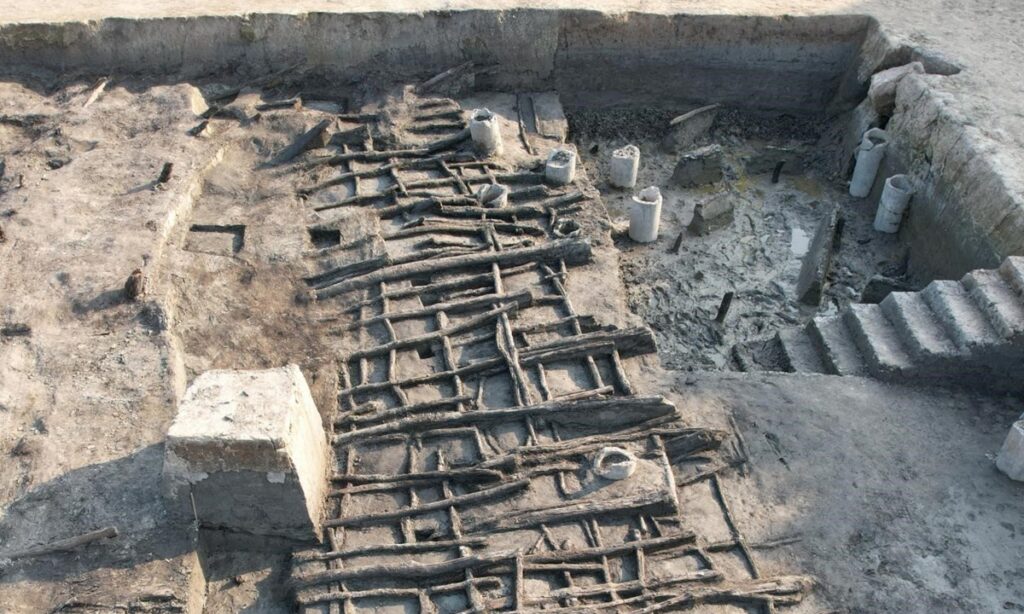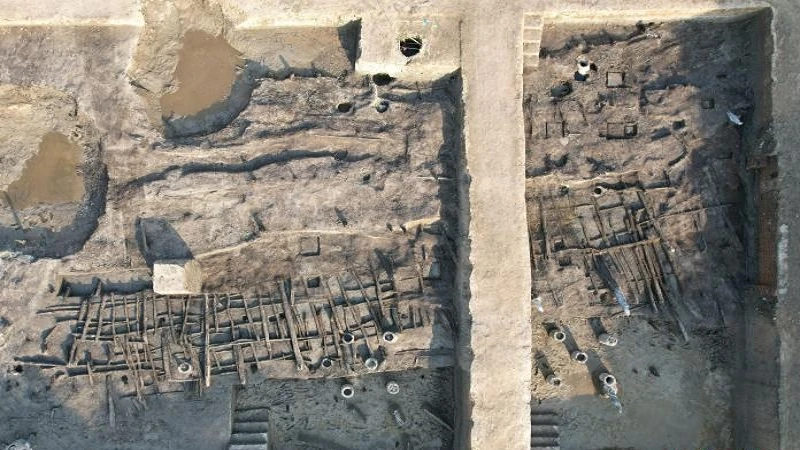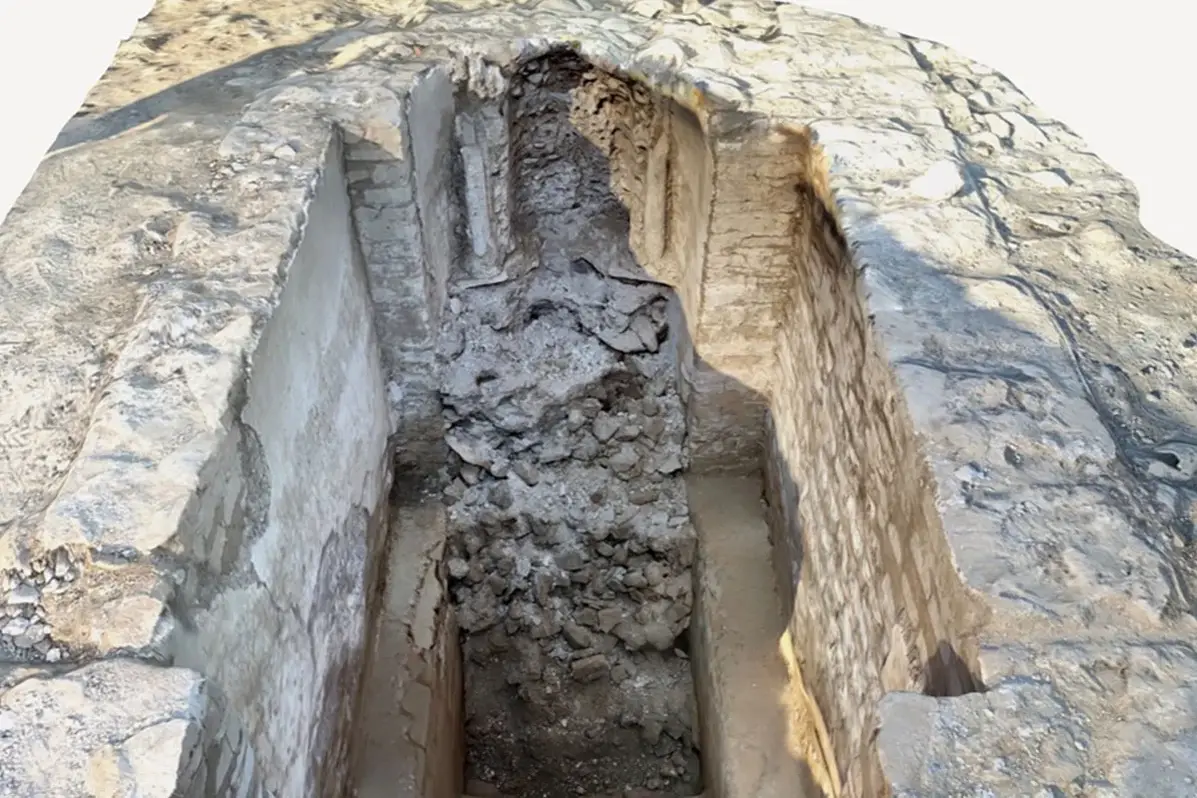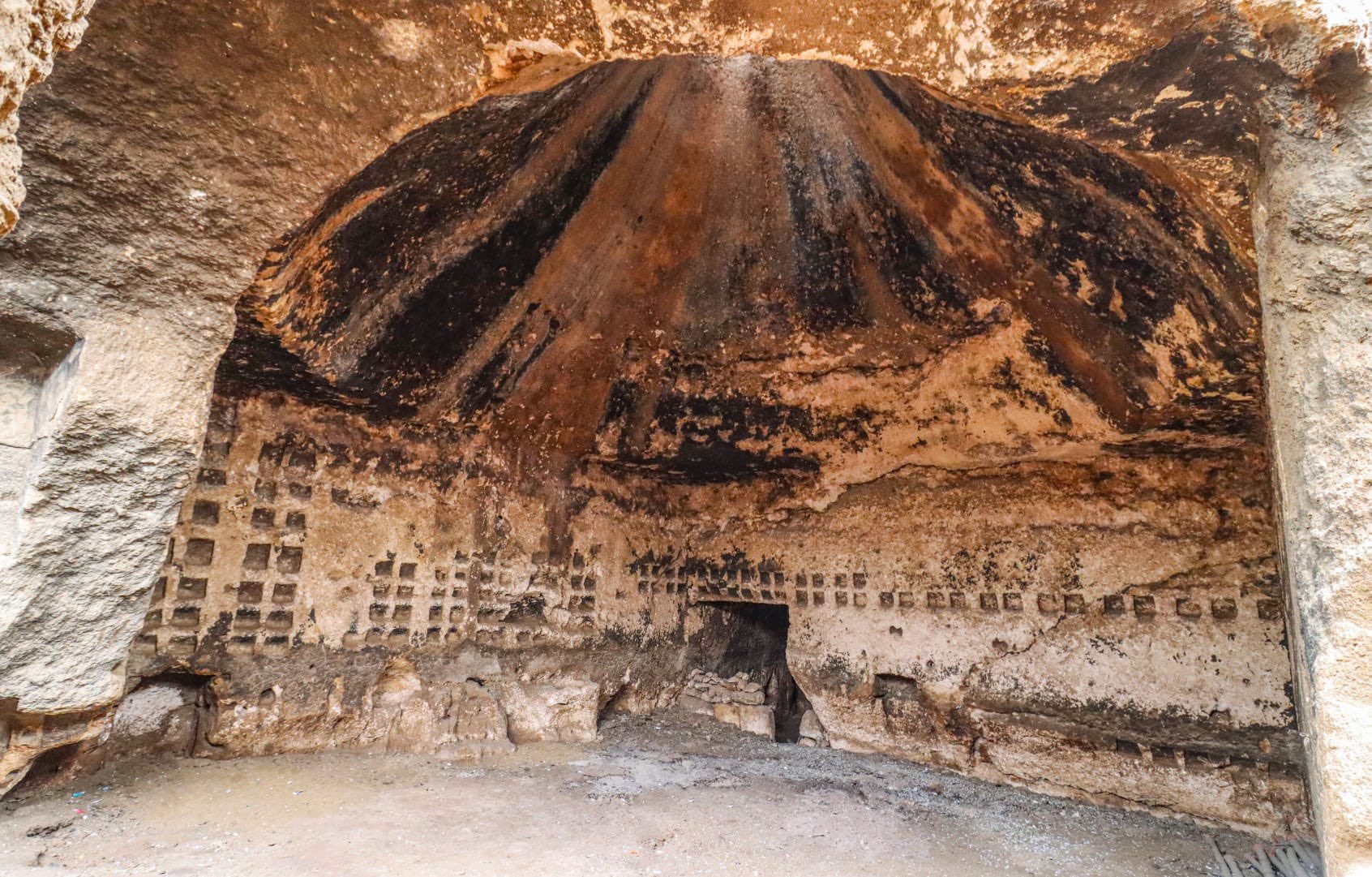An extraordinary archaeological discovery in Shaoxing, Zhejiang Province, China, has brought to light remarkably well-preserved wooden houses dating back over 2,000 years. These structures, dating from 475 BC to 221 BC, offer unique insights into the lifestyle, architectural techniques, and daily life of the ancient Yue State.
A Historical Time Capsule: The Baicaoyuan Excavation
Preliminary surveys conducted by the Shaoxing Institute of Cultural Relics and Archaeology in June and July 2024 revealed ancient riverbeds, wells, and other relics at the site. Radiocarbon dating confirmed that the structures date to around 400 BC, with evidence of thatched roofs indicating they were built approximately 2,390 years ago. Two main architectural foundations were discovered covering an area of 1,300 square meters. One consists of terraced wooden houses built on stilts with walls woven from wooden posts and thatch. The other features a similar stilted structure made of wooden piles arranged in ten parallel rows, reinforced with horizontal beams and bark layers. Experts note that while these terraced houses are simpler than those found in the city, they reflect an architectural style adapted to the coastal environment.
Traces of Yue Architecture and Daily Life
Wang Renfang, deputy director of the institute and head of the archaeological team, emphasized that this discovery is an exceptionally rare archaeological find in the Yue State capital, both in terms of scale and preservation. The intact thatched roofs and bamboo-wood walls provide critical material evidence for studying Yue architecture, offering new insights into construction methods and the way of life on the outskirts of the capital.

In addition to the wooden structures, the excavation revealed artifacts such as primitive porcelain cups, red pottery tripods, impressed hard pottery urns, and bronze drill bits. The site also contained remains of domestic animals, including dogs, pigs, and cattle, as well as a large amount of marine resources, suggesting that the area was an important departure point for sea voyages and that fishing was an integral part of daily life.
Lessons from Ancient Wisdom for Modern Engineering
This discovery is further contextualized by findings from the Jizhong site, where large-scale Yue structures dating back approximately 2,500 years were confirmed. The Baicaoyuan site, located 4.47 kilometers north of the Cao’e River, lies on the outskirts of this ancient capital, providing a broader understanding of the urban landscape of the Yue State.
Furthermore, the excavation at the Baicaoyuan site revealed hydraulic facilities from the Warring States Period, which, although yet to be confirmed, may provide insights into the maritime defense strategies and coastal activities of the Yue people. The architectural wisdom displayed in these structures, including the use of standardized mortise and tenon joints and flexible hemp ropes, reflects advanced construction techniques that predate similar methods by centuries.
As Shaoxing grapples with rapid urban development, the site offers unexpected lessons for modern engineering, particularly in earthquake-resistant designs and flood mitigation applications. Plans are underway to protect the most fragile structures, creating China’s first “archaeological time capsule” for future generations. A virtual reality reconstruction at the Zhejiang Provincial Museum will allow visitors to experience the ancient fishing quarter firsthand.
Cover Image Credit: New Hanfu





